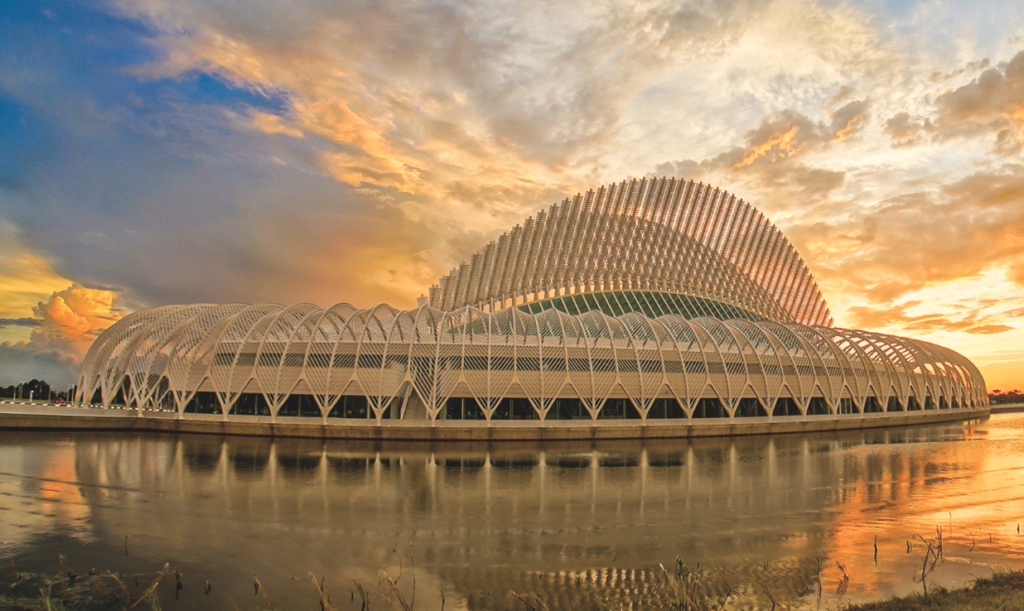It looks like the sunbleached exoskeleton of a giant space bug crouching by the side of I-4. USF Polytechnic’s first building is a singularity, designed by Spanish artist-architect Santiago Calatrava. Famous for his heroic, lacy bridges and public structures throughout the world, Calatrava’s signature style is somehow fitting for Florida’s sunshine and the great, open plain in which the Innovation, Science, and Technology building sits.

photo by Joel Morales
The school includes classroom, laboratory, and library space for Florida’s newest university. It was born to educate students in applied engineering—a sort of hybrid between a technical college and a research institution. Surrounded by a moat, the first impression is that of an ancient thing rediscovered. The white latticework ring provides pleasant, shaded outdoor seating that wraps the exterior in a kind of inside-out version of well-known college campus spaces like University of Virginia’s iconic lawn.
Smooth, curved plaster stairwells at the two ends lead one from a polished concrete ground floor up into a student commons lined with classrooms and faculty offices. Florida’s fierce sunlight is tamed by the feathery roof structure rising over a spacious, maple-floored open area, filling it with smooth, even light, giving students a beautiful, ethereal study hall and gathering space.
Interior materials are simple: plaster, concrete, and wood. Useful innovations such as magnetic glass (discouraging messy scotch tape) line faculty offices. Deep in the beast’s heart, a supercomputer lurks, humming and blinking, revealing that it’s not an ancient thing at all. By giving the light-filled upper loft space back to people, Calatrava’s school building sets a tone of future hope for humanity that seems lost in today’s cold, institutional architecture seen on many other college campuses. One hopes that the other buildings to follow here will maintain this same tone.
Typical of Calatrava, the building has moving parts: the roof is supposed to open like eyelids to modulate the sun’s rays. Its hydraulic mechanism seems simple, but alas, it has become stuck. Buildings aren’t supposed to move around, generally speaking, and breaking this rule is Calatrava’s great delight, but also an Achilles heel that dooms the maintenance staff to futile tinkering.
Polk County draws unusual architecture like a strange magnet. Bok Tower; the Florida Southern College campus of Frank Lloyd Wright; the signature Gene Leedy double-tee houses—all nestled into our state’s jungled center like visionary experiments scraped out of the primeval forest. Calatrava’s bold design adds a touch of world futurism to the mix. This space bug is of the state’s best examples of new design, and winner of the 2015 International Architecture Award. If more educational spaces were this good, more students might be inspired to go to college. As it is, the building is a learning tool in itself, uplifting the spirit.
You can see more at: FloridaPolytechnic.org
